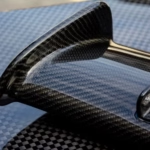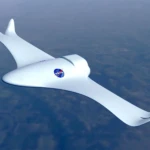Power Release: The Key Role of CNC Machining in High-Performance Engine Blocks
Building a high-performance engine isn’t just about bolting on a turbocharger or an offensive camshaft. The heart of relentless power and bulletproof reliability is an integral part of a glitzy attention that is usually not available: the engine block. Moreover, when it comes to engine blocks that can withstand huge pressure while withstand huge efficiency, computer numerical control (CNC) processing shifts from being an option to absolute necessity. Let’s look at why CNC (especially advanced five-axis machining) is the undisputed champion in this demanding arena.
Engine Block: Power Base
Think of the engine block as the foundation and structural skeleton of the entire engine. It houses cylinders, crankshafts, camshafts (in many designs), as well as many coolant and oil channels. In the context of high performance or racing, the foundation faces extraordinary challenges:
- Extreme internal pressure: The combustion pressure in a forced induction or high-pressure engine can reach thousands of psi. The cylinder walls must resist deformation to maintain a perfect ring seal.
- Strong calories: High thermal loads of combustion and friction can cause thermal expansion and distortion. The block must maintain dimensional stability and effectively dissipate heat.
- Huge torsion and bending loads: Rotating components (crankshaft, rod, piston) produce strong twisting forces. The block must be stiff to prevent bending, which may cause bearing failure or misalignment.
- Precise requirements: Cylinder bore geometry (roundness, straightness, surface surface), main bearing bore arrangement (drilling/grinding), deck flatness and lifter bore positioning for minimized friction, ensure proper sealing, ensure oil control and achieve maximum power potential. Micron-level accuracy is not negotiable.
Why traditional methods are insufficient:
While casting (sand, permanent mold or die casting) is the primary method of creating rough shapes for most blocks, casting post-treatment is crucial. Precise methods such as manual machining, fixture boring, or older 3-axis CNC operation are lacking:
- Complex functional processing: Accurately, a sophisticated coolant jacket, an optimized oil depot and weight-saving pockets are required on a simple machine.
- Final accuracy and repeatability: Maintain less than 0.001" In the absence of advanced CNC, tolerance across multiple functions is consistent, and multiple blocks are challenging.
- Handling advanced materials: Modern high-performance blocks usually use materials such as A356-T6 aluminum or Gaoniac compressed graphite iron (CGI), which require a stable, rigid processing platform.
- Optimized surface finish: The micro cargo of cylinder bore is crucial for ring seats and minimize oil consumption and requires a complex honing process that is often integrated with CNC control.
- Achieve geometric perfection: Ensuring perfect cylindrical holes, true deck aircraft and absolutely aligned main bearing saddles require flexibility for multi-axis motion.
Enter five-axis CNC machining: game changer
This is advanced five-axis CNC machining (such as provided by Greatlight) that improves engine block manufacturing from standard to excellence. Five-axis machining uses a cutting tool that rotates along five different axes (X, Y, Z, and two axes (usually A and B), usually A and B or C). This capability is transformative:
- True omnidirectional processing: Complex geometry can be machined in a single setup, such as scattered cylinders, complex water jackets around the valve seats, or tilted lift galleries. This eliminates cumulative errors from multiple settings and fixes.
- Unrivaled accuracy and accuracy: Five-axis machine has excellent rigidity and stability. Dynamic tool path synchronization continuously maintains ideal cutting angles and tool engagement. This leads to special geometric control: the true circular shape and straight holes are perfectly parallel and flat, with the main bearings arranged impeccably.
- Perfect cylinder bore completion: Advanced CNC controlled grinders produce an ideal smooth finish that is critical for low friction, optimal ring seals and long engine life. CNC control ensures consistency from hole to hole and blockage.
- Effective machining of complex surfaces: Undercut, used to reduce weight or fluid dynamic contoured surfaces and can be directly processed with engraving functions without the need for sophisticated custom tools or time-consuming handwork.
- Material mastery: The powerful spindle and robust structure allow the five-axis machine to effectively handle harder materials such as CGI iron or high-strength aluminum alloys, which are commonly used in high-Zoot performance blocks.
- Production repeatability: For engine manufacturers or stores that produce multiple high-performance blocks, the five-axis CNC guarantees the same critical dimension on each unit. Consistency is the key to performance and reliability.
Beyond machining: Greglight’s complete engine block solution
At Greatlight, we learned that high-performance engine blocks are more than just accurate milling metal. Our expertise as a professional five-axis CNC machining manufacturer extends throughout the life cycle:
- Material expertise: We recommend and use the best materials (A356-T6, 6061-T6, 7075-T6 aluminum, CGI, ductile iron) to suit your power targets and applications.
- Comprehensive processing services: From accurate roughness to complex feature creation (cylinder bore, deck, main saddle, lift bore, coolant/oil passage, bolt hole), to precise grinding and decking and other key finishes.
- Strict inspection: Verify that each critical dimension meets strict specifications using advanced metrology equipment such as coordinate measuring machines (CMM).
- One-stop post-processing: Provides necessary secondary operations such as bead blasting, surface treatment (anodizing, alodining, coating), heat treatment approval and thorough cleaning – all under one roof. Each completion step affects life and performance.
- Manufacturing Design (DFM): Collaboration early in the design phase to use CNC machining strength optimization blocks for productivity, rigidity, coolant flow and overall performance. We can effectively move from design to completion of engineering blocks.
Conclusion: Highest performance of precise design
The engine block remains the cornerstone in the relentless pursuit of horsepower, torque and reliability. Ignoring its precise manufacturing is a guaranteed way to compromise performance, premature failure or make substantial unfulfilled. Advanced five-axis CNC machining is not only a luxury in the field. This is the basic tool for achieving the level of geometric perfection, structural integrity and consistency required for modern high-performance engines.
For engine manufacturers, racing teams and manufacturers push the boundaries, working with CNC experts at Greatlight (Greatlight) provides access to the technology and expertise necessary to convert raw materials into true power masterpieces, an engine block won by engineering. From initial design consultation to rigorous machining, inspection and finishing, we provide an uncompromising foundation for every high-performance engine. Ready to build the final Power Plant Foundation? Let’s discuss how Greatlight’s five-axis CNC feature brings your high-performance engine block project to life [Link to Contact Page or Get a Quote Page].
FAQ: CNC machining of high-performance engine blocks
Q1: Why can’t I just use a standard 3-axis CNC machine for performance blocks?
A: While 3-axis machines are valuable, they often require multiple complex setups and fixtures to find composite angles and complex internal functions in the performance block. Each setting introduces potential errors. Five-axis machining accomplishes a complex task involving a setting angle (e.g., valves or cylinders, elevator kitchen ramps) that ensure excellent accuracy, geometric perfection (True cylinder bore, deck planarity, consistency of line bores) and efficiency that 3-axis cannot match those critical applications.
Question 2: What specific benefits does the five-axis CNC provide for cylinder boredom and honing?
A: In addition to basic size, five-axis machines, especially those integrated with CNC hone, also offer key advantages:
- Perfect cylindrical geometry (roundness and straightness): Continuous tool path optimization eliminates harmonics, ensuring that the holes are not only suitable in size but are also completely circular and straight from top to bottom.
- Best Surface Finish (Plateau Grinding): Precise computer control enables the ideal surface texture for minimal friction and optimal piston ring seal.
- consistency: Each hole in each block can achieve the same geometry and finish – crucial for balancing engine performance.
Question 3: I’m working with billet aluminum. Do I still need special CNC features?
Answer: Absolute. While removing potential casting defects from billets, machining solid aluminum blocks requires huge material removal and very rigid, powerful machines. In addition, complex internal channels, complex coolant jackets, lift bores and critical bearing surfaces inherent in the surface Require Only advanced five-axis CNC provides complex tool access, multi-directional cutting and extreme accuracy. Investment in materials makes precise processing even more critical.
Q4: What accuracy can I expect for block five-axis CNC?
Answer: Greglight’s five-axis CNC machining has been consistently implemented:
- Dimensional tolerance: Typically within +/- 0.0005 inches (0.0127 mm) for key features.
- Geometric tolerance (real position, cylinder, planarity, parallelism): usually better than 0.001 inches (0.025 mm), sometimes down to 0.0005 inches depending on feature size and configuration.
- Surface finishes (cylindrical hole grinding): Implementation of industry-specific standards for plateau finishes (e.g., RA, RK parameters) is critical for ring sealing and oil consumption control. Precision specifications are project-dependent and are verified by CMM.
Q5: How to ensure the main bearing alignment in CNC machining (lines are boring/hard)?
Answer: Criticism! The precise thread boredom/grinding of the crankcase saddle ensures perfect coaxial unity of the main bearing bores. This is the basis of crankshaft life, minimizing bearing wear and friction.
- Single setup accuracy: Using precision ground mandrell, the holes are processed in a setup on the CNC mill, eliminating the error of moving huge blocks between machines. CNC ensures precise size and perfect alignment in a single stable operation.
Question 6: Which post-processing services are crucial to the blocks produced by CNC?
Answer: In addition to processing, basic completions include:
- clean: Strict cleaning to remove all microscope-processed chips and coolant residues is critical before assembly.
- Surface preparation: Degreasing, acid etching (such as Alodine/Chromate of aluminum) to enhance corrosion resistance and paint adhesion.
- Surface treatment: Protective anodization (for hard coatings made of aluminum) or specialty paint on deck.
- Bead Explosion: Used for surface texture or aesthetic finishes. Greatlight provides integration of these services into the machining workflow to provide fully completed, i.e. ready-to-assemble components.
Q7: Why choose Greatlight for my high-performance engine block machining?
A: Gremplying specializes in complex requirements of performance parts:
- Advanced 5-axis technology: Equipped with state-of-the-art machines designed for tight tolerances and complex geometry.
- Materials and process expertise: In-depth understanding of high-performance materials (AL, ferroalloy) and key engine block processing processes (boring, honing, deck, boring lines).
- quality assurance: A rigorous process and final inspection were performed using CMM and surface measurement tools.
- A true one-stop shop: Comprehensive processing, completion and cleaning eliminates the hassle of coordination from suppliers.
- Engineering Cooperation: DFM support is provided to optimize your block design for performance and manufacturability. Speed, accuracy and depth application knowledge is our hallmark.

















